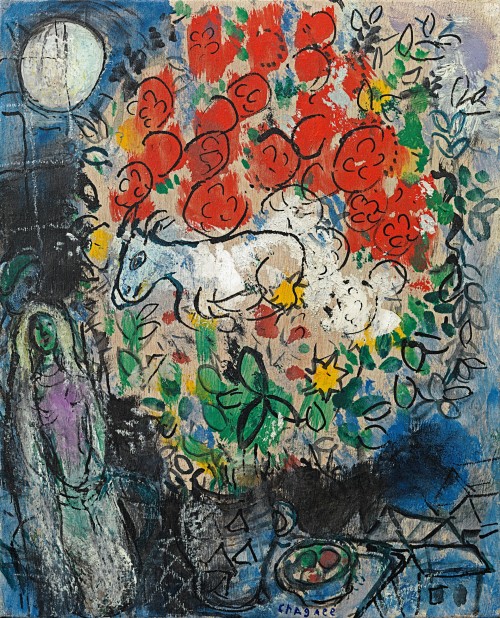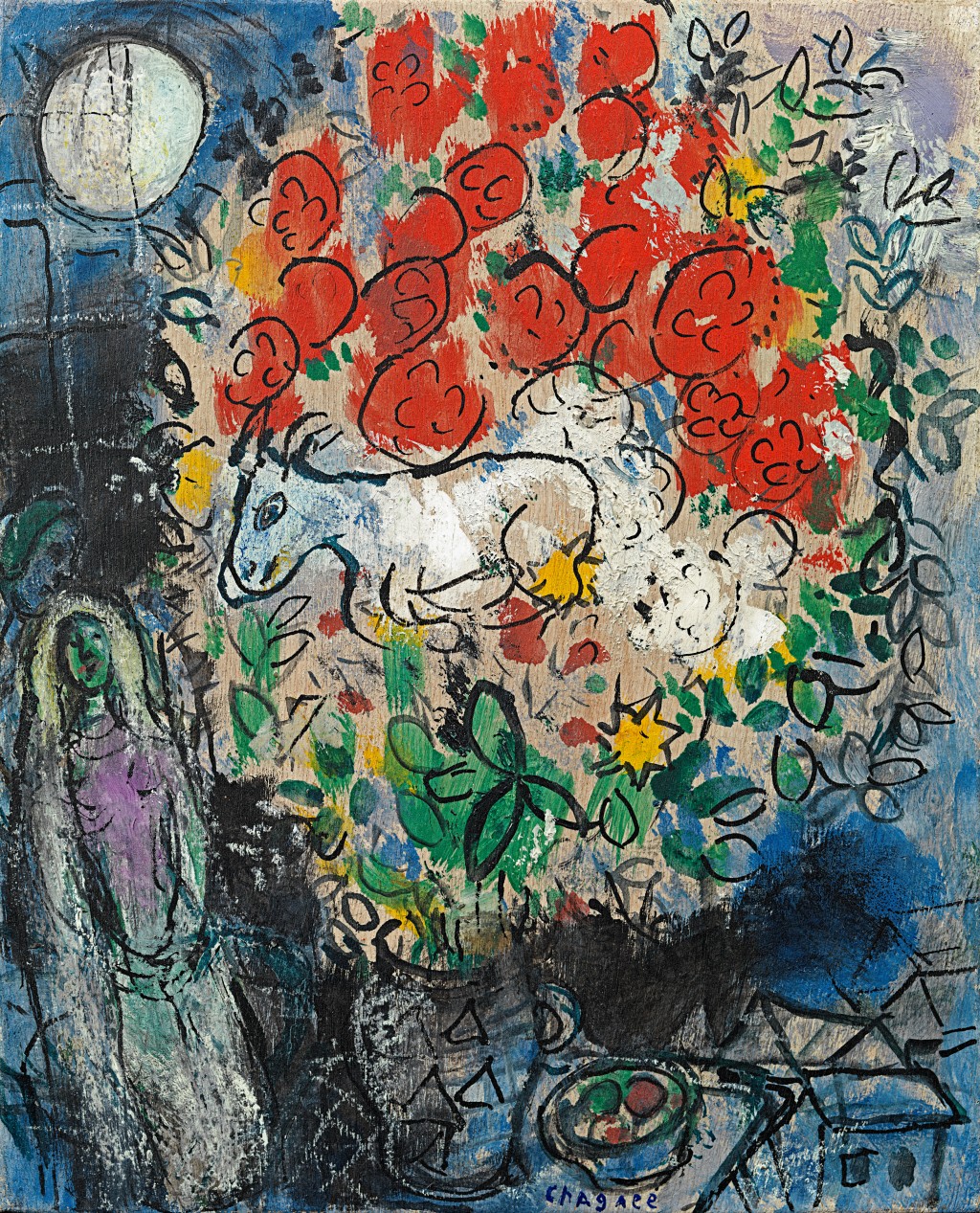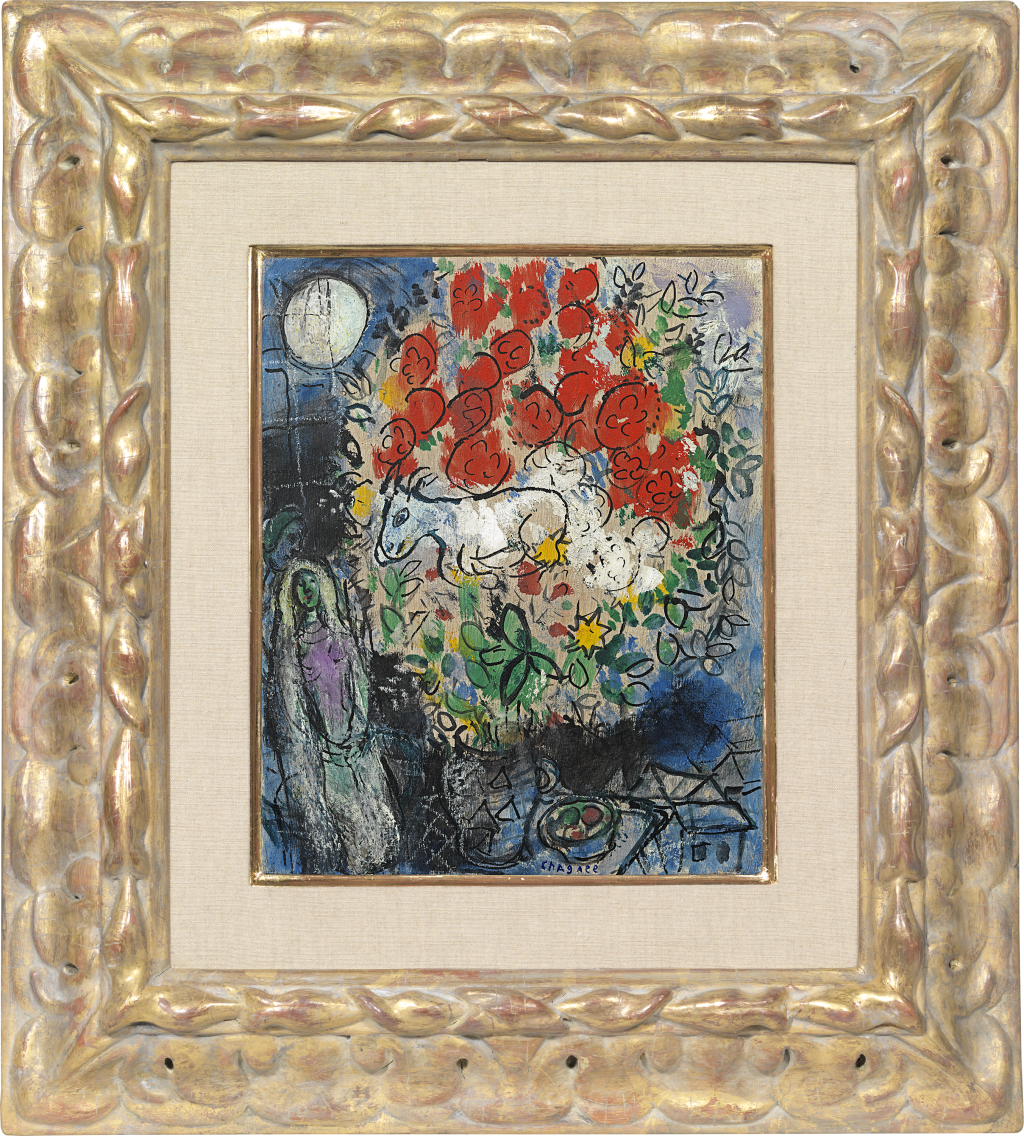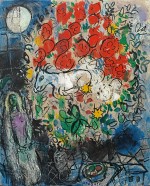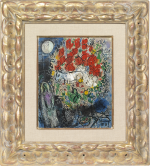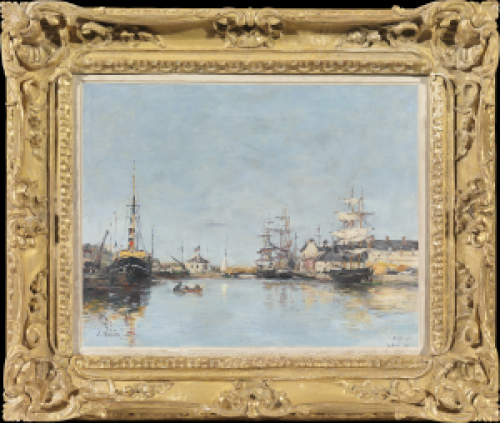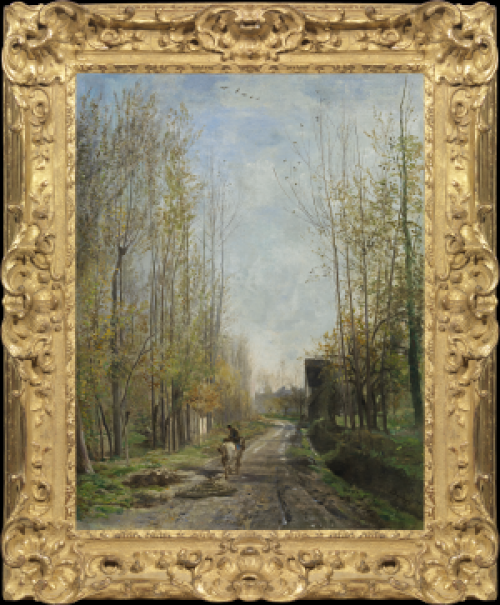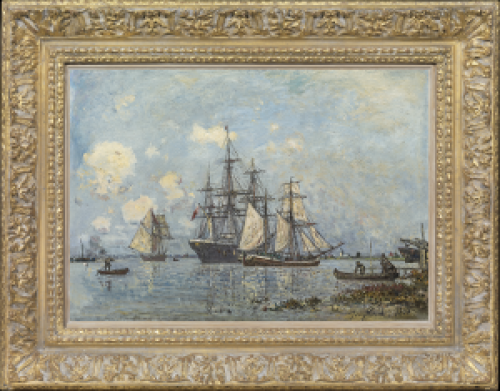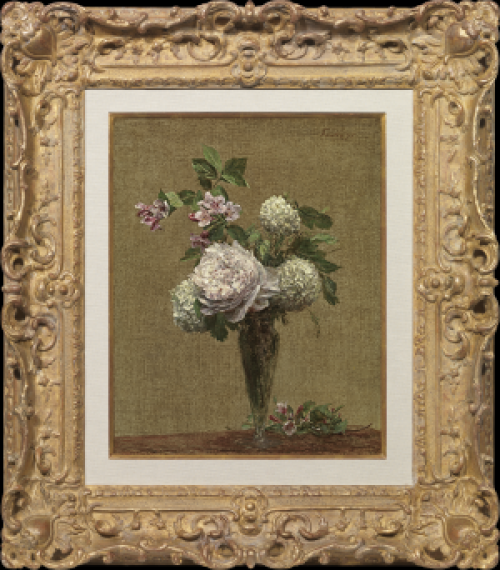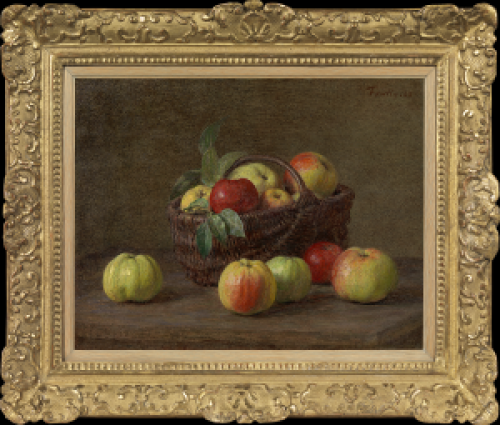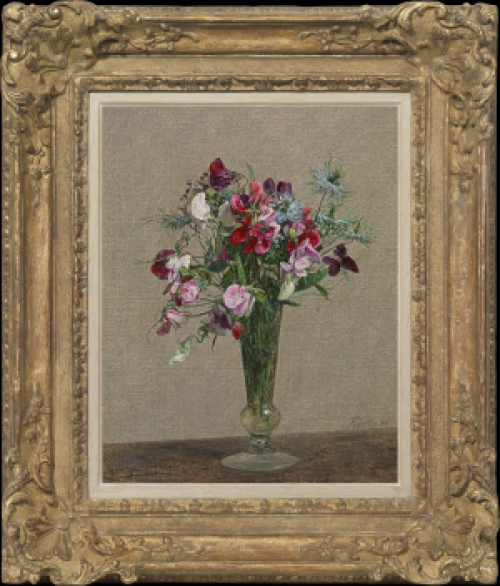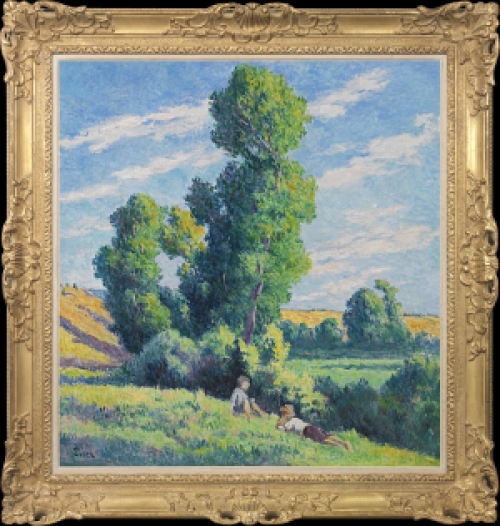MARC CHAGALL
Vitebsk 1887 - 1985 Saint-Paul-de-Vence
Ref: CB 211
Esquisse pour Chèvre dans un bouquet or Le bouquet rouge
Signed lower centre: Chagall
Oil and ink on panel: 10 ⅝ x 8 ¾ in / 27 x 22.2 cm
Frame size: 19 ½ x 17 ¼ in / 49.5 x 43.8 cm
Painted in 1952
Provenance:
Fairweather-Hardin Gallery, Chicago, as Bouquet;
Mr & Mrs Meyer Kestnbaum (1896-1960), Chicago, acquired from the above in 1958, then by descent
Exhibited:
Tokyo, Musée National d’Art Occidental and Musée Municipal de Kyoto, Exposition Marc Chagall – Japon 1963, October-December 1963, no.93, illus., as Le Bouquet, lent by Mrs Meyer Kestnbaum
The Comité Marc Chagall has confirmed the authenticity of this work and it is recorded by them as no.2023357
Paintings of lovers and flowers are among Marc Chagall’s most celebrated images featuring representations of himself with his adored wife and muse, Bella Rosenfeld. Writing of their courtship in his autobiography, Chagall recollected: ‘I only had to open my window, and blue air, love, and flowers entered with her.’[1] As early as The birthday, 1915 (Museum of Modern Art, New York), lovers and flowers became a perennial theme in the artist’s work, inextricably linked to the celebration and evocation of love. The radiant bride and her ethereal lover on the left of this flourishing bouquet may also signify Chagall’s happy marriage to Valentina ‘Vava’ Brodsky, whom he met in the spring and wed in the summer of 1952. The vivid, jewel-like colours of the floral display are illuminated by the full moon, which highlights the bright white goat seated in the centre of the composition. Animals frequently appear in Chagall’s joyful images of magical realism, here fluently articulated in ink like the burgeoning flowers wreathed by leaves. Beneath the luminous arrangement, the triangular roofs of small dwellings recall the artist’s hometown of Vitebsk. A vivid combination of memory, fantasy and association, this beautiful work is an expression of pure creative joy and the vital brilliance of life itself.
This exceptional painting was previously owned by Meyer Kestnbaum (1896-1960), Chairman of the Commission on Intergovernmental Relations during the Eisenhower administration and from 1955 until his death, a special assistant to President Eisenhower.
MARC CHAGALL Hon. RA
Vitebsk 1887 - 1985 Saint-Paul-de-Vence
Marc Chagall was born on the 7th July 1887 in Vitebsk, Russia. From 1907 to 1910, he studied in Saint Petersburg, at the Imperial Society for the Protection of the Arts and later with Léon Bakst. In 1910, he moved to Paris, where he associated with Guillaume Apollinaire and Robert Delaunay and encountered Fauvism and Cubism. He participated in the Salon des Indépendants and the Salon d’Automne in 1912. His first solo show was held in 1914 at Der Sturm gallery in Berlin. Chagall visited Russia in 1914 and was prevented from returning to Paris by the outbreak of war. Chagall settled in Vitebsk, where he was appointed Commissar for Art in 1918. He founded the Vitebsk Popular Art School and directed it until disagreements with the Suprematists resulted in his resignation in 1920. He moved to Moscow and executed his first stage designs for the State Jewish Chamber Theatre there. After a sojourn in Berlin, Chagall returned to Paris in 1923 and met Ambroise Vollard. His first retrospective took place in 1924 at the Galerie Barbazanges-Hodebert, Paris.
During the 1930s, he travelled to Palestine, the Netherlands, Spain, Poland, and Italy. In 1933, the Kunsthalle Basel held a major retrospective of his work. During World War II, Chagall fled to the United States. The Museum of Modern Art, New York, gave him a retrospective in 1946. He settled permanently in France in 1948 and exhibited in Paris, Amsterdam, and London. During 1951, he visited Israel and executed his first sculptures. The following year, the artist travelled in Greece and Italy. During the 1960s, Chagall continued to travel widely, often in association with large-scale commissions he received. Among these were windows for the synagogue of the Hadassah-Hebrew University Medical Center, Jerusalem, installed in 1962; a ceiling for the Paris Opéra, installed in 1964; a window for the United Nations building, New York, installed in 1964; murals for the Metropolitan Opera House, New York, installed in 1967; and windows for the cathedral in Metz, France, installed in 1968. An exhibition of the artist’s work from 1967 to 1977 was held at the Musée du Louvre, Paris, in 1977–78, and a major retrospective was held at the Philadelphia Museum of Art in 1985. Chagall died March 28, 1985, in Saint-Paul-de-Vence, France.
[1] Marc Chagall cited in My Life, Peter Owen, London 1965, p.121.

